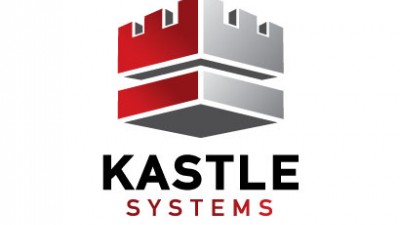You Can’t Touch This: Access Control’s Evolution From Building Security To Amenity

While hand sanitizer stations and redesigned office layouts are among the highly visible ways commercial real estate has adjusted to Covid-19, there are also less visible — but no less important — tools that can make buildings smarter and more competitive in addition to enhancing health and safety.
Touchless access control technology allows people to enter buildings, elevators and offices without manipulating keycards or pressing buttons. But in addition to making the office more efficient, user-friendly and hygienic, mobile access control can also harness valuable data for building managers or HR departments.
“Access control is basically the nervous system of the building that makes all those doors function and collects activity data that enables the building to operate smarter,” Kastle Systems CEO Haniel Lynn said.
Employees already are accustomed to carrying plastic swipe cards to enter the office. But in the age of smart buildings, those cards are hopelessly dumb for any employer or landlord who wants to collect meaningful information beyond simple attendance.
The next step is to take greater advantage of mobile access technology, Lynn said. Kastle’s example is its KastlePresence platform, which grants users touchless building access via a smartphone app. It also leverages data to improve the user experience.
“Landlords can use this data to create more dynamic and productive occupant engagement,” he said. “The mobile screen enables them to present more information and a selection of services, which is not possible with a plastic card.”
Bisnow spoke with Lynn to learn more about mobile access technology and the user experiences it can enable.
Bisnow: What challenge was Kastle addressing when it introduced its KastlePresence mobile technology in 2016, four years before the pandemic?
Lynn: We thought that the process of entering a workspace was way more complicated than necessary. The idea that a worker still had to tote an awkward physical credential around their neck and wave it around for doors to open was not a suitable experience for a modern workplace, which featured effortless automation for systems like lighting and HVAC.
We launched KastlePresence as a hands-free way of entering a space without presenting a card — aimed at delighting the end user.
Bisnow: How has the pandemic impacted adoption of mobile access?
Lynn: There continues to be interest in using touchless technology to avoid contact with surfaces where germs linger, but touchless also enhances user experience. Commercial operators are investing in the tenant experience to differentiate properties. They want to make them more appealing to bring workers back.
I also think that consumers, having spent two years with home technology, have higher expectations for workplace technology. The office experience has lagged the home consumer experience from a technology standpoint for some time.
Bisnow: Has the main driver for touchless evolved during Covid?
Lynn: Yes, to some extent. We realized very early that we could easily adjust the KastlePresence app to address health and safety concerns as well as security. For example, we implemented a simple health attestation survey on the app for granting daily access privileges, which was a big deal because many localities required buildings to screen people to determine that they were [Covid-19] clear before they could come into the office.
More recently, with the advent of vaccination mandates in some workplaces, Kastle has configured the platform to offer clients the option of referencing their internal or third-party vaccination status records, if required, to gain office access on the app. This is all made possible by this mobile access technology and its ability to integrate with other health-related data sources.
Another feature we've worked on, called Glimpse, allows users of spaces like fitness centers to see how many people are in the gym if they don't want to work out when the space is busy.
These are examples of how we view access control not as a utility but as an amenity that allows people to enjoy healthier and more convenient engagements with their space.
Bisnow: How can mobile access control benefit building operators in this very competitive CRE market?
Lynn: People want to return to a safe workplace, whether it’s full time or in a hybrid mix of home and office. Features that can confirm any occupant who enters your office has been pre-cleared of Covid-19 just makes users more confident to come to work.
Landlords are already investing in mobile-based features like tenant engagement apps to differentiate their property experience. In a hybrid workplace, more features will be added like space reservation functionality for scheduling time in shared workspaces.
At the same time, buildings are investing to differentiate their spaces because they are worried that the demand for space is not going to bounce back immediately or will take some time. They are investing to make the space a more appealing option as employers encourage workers to return to the office. And as they think about that, and about the impact of hybrid remote work, they want a product that differentiates their space from others, which mobile access control can do.
This article was produced in collaboration between Studio B and Kastle Systems. Bisnow news staff was not involved in the production of this content.
Studio B is Bisnow’s in-house content and design studio. To learn more about how Studio B can help your team, reach out to studio@bisnow.com.

